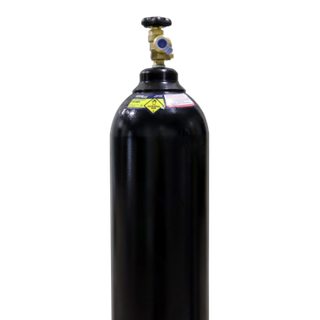- Home /
- REFRIGERANT & EMPTY CYLINDERS /
- NON RENTAL CYLINDERS & REFILL /
- SPEEDGAS Nitrogen - C Size
Shop Now
-
HVACR SPARES & EQUIPMENT
- ACTRONAIR & CONTROLS
- SAMSUNG
- EVCO CONTROLS
- EMERSON/COPELAND
- COMMERCIAL KITCHEN VENTILATION
- EVAPORATORS
- CONDENSING UNITS
- CONDENSERS
- BITZER
- EMBRACO
- AIREF
- FRASCOLD
- DANFOSS
- SANHUA
- RANCO CONTROLS
- REGAL
- AXIAL FANS, MOTORS & BLADES
- SYSTEM COMPONENTS
- COMMERCIAL COMPRESSORS
- CONTROLS
- DEFROST CONTROLS
- SKOPE
- KULTHORN KIRBY
- REFRIGERATION HARDWARE
-
HVACR SERVICE TOOLS
- SUPERCOOL HVACR
- RECLAIM UNITS
- VACUUM PUMPS
- LEAK DETECTORS
- REFRIGERANT SCALES
- MANIFOLDS, GAUGES & HOSES
- REGULATORS
- OXY SETS/BRAZING TORCHES/ETC
- DISPOSABLE BOTTLES
- BRAZING
- UV DETECTION/INJECTION KITS
- CHEMICALS
- SUPER SEAL/CLIPLIGHT
- REPAIR PATCHES
- TOUGH TOOL BAGS, VETO PRO PAC
- THERMOMETERS
- HAND TOOLS
- TEST & MEASUREMENT
- GENERAL HVACR TOOLS
- TAPES/GLUES/PAINTS/ACCS'/ETC
- FIRE EXTINGUISHERS
- ADAPTORS & ACCESSORIES
- MISCELLANEOUS
- BLACK DIAMOND TOOLS
- REFRIGERANT & EMPTY CYLINDERS
- COPPER PIPE & FITTINGS
-
AIR CONDITIONING
- AC SYSTEMS
- A SAUERMANN PUMPS
- COPPER FITTINGS
- ASPEN XTRA & ACCESSORIES
- ASPEN PUMPS
- HANWEST CONTROLS
- BIG FOOT SUPPORT SYSTEMS
- CONDENSATE PUMPS
- AIR CONDITIONING FILTERS
- WALL & ROOF BRACKETS
- PVC/PLASTIC DUCT & FITTINGS
- DRAIN PIPE & ACCESSORIES
- MOUNTING FEET & SLABS
- AIR DIFFUSERS & FLEXIBLE DUCTS
- A/C INSTALLATION ACCESSORIES
- COLOURBOND TRUNKING
- UNIVERSAL REMOTES
- THERMOSTATS
- GLYCOL
- TESTO EQUIPMENT
- MECHANICAL SERVICE EQUIPMENT
- ELECTRICAL COMPONENTS
- AUTOMOTIVE
- DOMESTIC REFRIGERATION
-
HEATING SPARES & EQUIPMENT
- BAIN MARIE EQUIPMENT
- HOT WATER SPARE PARTS
-
STOVE/OVEN/GRILL SPARE PARTS
- FAN MOTORS & ACCESSORIES
- THIN COIL ELEMENTS
- MONOTUBE ELEMENTS
- SOLID HOTPLATES
- UNDERGLASS HILIGHT ELEMENTS
- OVEN FAN FORCED ELEMENTS
- OVEN &/OR GRILL ELEMENTS
- BOWLS & PANS
- RINGS & SOCKETS
- DOOR HINGES
- THERMOSTATS
- CONTROLS
- SWITCHES & INDICATORS
- TERMINALS & CONNECTORS
- OVEN KNOBS, CABLES & SEALS ETC
- GAS COOKTOP SPECIFIC PARTS
- MISCELLANEOUS
- EGO
- WATER FITTINGS & ACCESSORIES
- CAPACITORS
- CLEARANCE
-
GENERAL APPLIANCE SPARES
- DISHWASHER PARTS
- DOOR INTERLOCKS
- DRYER PARTS
- FISHER & PAYKEL PARTS
- GE PARTS
- HOOVER PARTS
- HOOVER TWIN TUB
- HOSES, CLAMPS, CONNECTORS ETC.
- KLEENMAID PARTS
- LG PARTS
- MAYTAG PARTS
- MOTOR BRUSHES
- SIMPSON PARTS
- UNIVERSAL BEARINGS
- UNIVERSAL PARTS & ACCESSORIES
- V, DRUM & BLOWER BELTS
- WHIRLPOOL PARTS
- MISCELLANEOUS
SPEEDGAS Nitrogen - C Size
Details
-
In Stock Unit:Each
Description
NEW CYLINDER INCLUDES FIRST REFILL - CYLINDERS ARE NOT REFUNDABLE ONCE PURCHASED - SIMPLY SWAP THE CYLINDER WHEN EMPTY AND PAY REFILL PRICE ONLY
Please note THIS LISTING IS FOR THE C cylinder
Nitrogen
Nitrogen is a non-flammable gas which does not support combustion. It is colourless, odourless and non-toxic; it is almost a totally inert gas. IG, HP, UHP Nitrogen is produced with a food grade classification.
Typical Uses
- Tyre inflation
- Food packaging
- Metal degassing
- Aerosol propellent
- Wine making
- Fire fighting
- See more below
Description
Nitrogen is a non-flammable gas which does not support combustion. It is colourless, odourless and non-toxic; it is almost a totally inert gas (comprising approx. 79% volume of air).
IG, HP, UHP Nitrogen is produced with a food grade classification.
Main Hazards
Nitrogen is non-toxic, inert and inflammable. It comprises 78.09vol% of air we breathe. However, high concentrations in confined spaces may result in unconsciousness without symptoms.
Typical Uses
- Purging
- Tyre inflation
- Inert atmospheres
- Food packaging
- Gauge calibration
- Metal degassing
- Aerosol propellent
- Hydraulic systems
- Photo processing
- Plastic forming
- Pipeline testing
- Air tools
- Wine making
- Fire fighting
Cylinder dimensions are approximate – variations may occur due to manufacturing tolerances
Height includes the valve

Storage and handling
- Protect the cylinders and valves from physical damage, whether empty or full.
- Secure cylinders in an upright position.
- Store in clean well ventilated areas below 45°C, away from combustible materials and heat sources.
- Ensure all devices, including fittings and regulators, are free from dust, oil and grease.
- Always open the valve which helps to prevent leakage.
- Close valves fully when not in use.
- Check regularly for leaks.
- Do not attempt to transfer contents from one cylinder to another.
N.B. Only regulators, manifolds and ancillary equipment, rated for the appropriate pressure and compatible with the relevant gas, shall be connected to or downstream of these cylinders.
In case of leaks
- Check for leaks by sound and locate with soapy water.
- Evacuate personnel from the area in which a very large quantity of gas is likely to move.
- Stop leak, if possible, and only if safe to do so.
- Do not approach major leaks without air supplied breathing equipment.
- If leak cannot be stopped, and only if safe to do so, remove cylinder to a safe area outdoors and allow to empty. Ensure people have been evacuated from the vicinity of the gas flow.
- Return empty cylinders and pack to supplier with a note to confirm the leak occurred
- Notify emergency services if required







